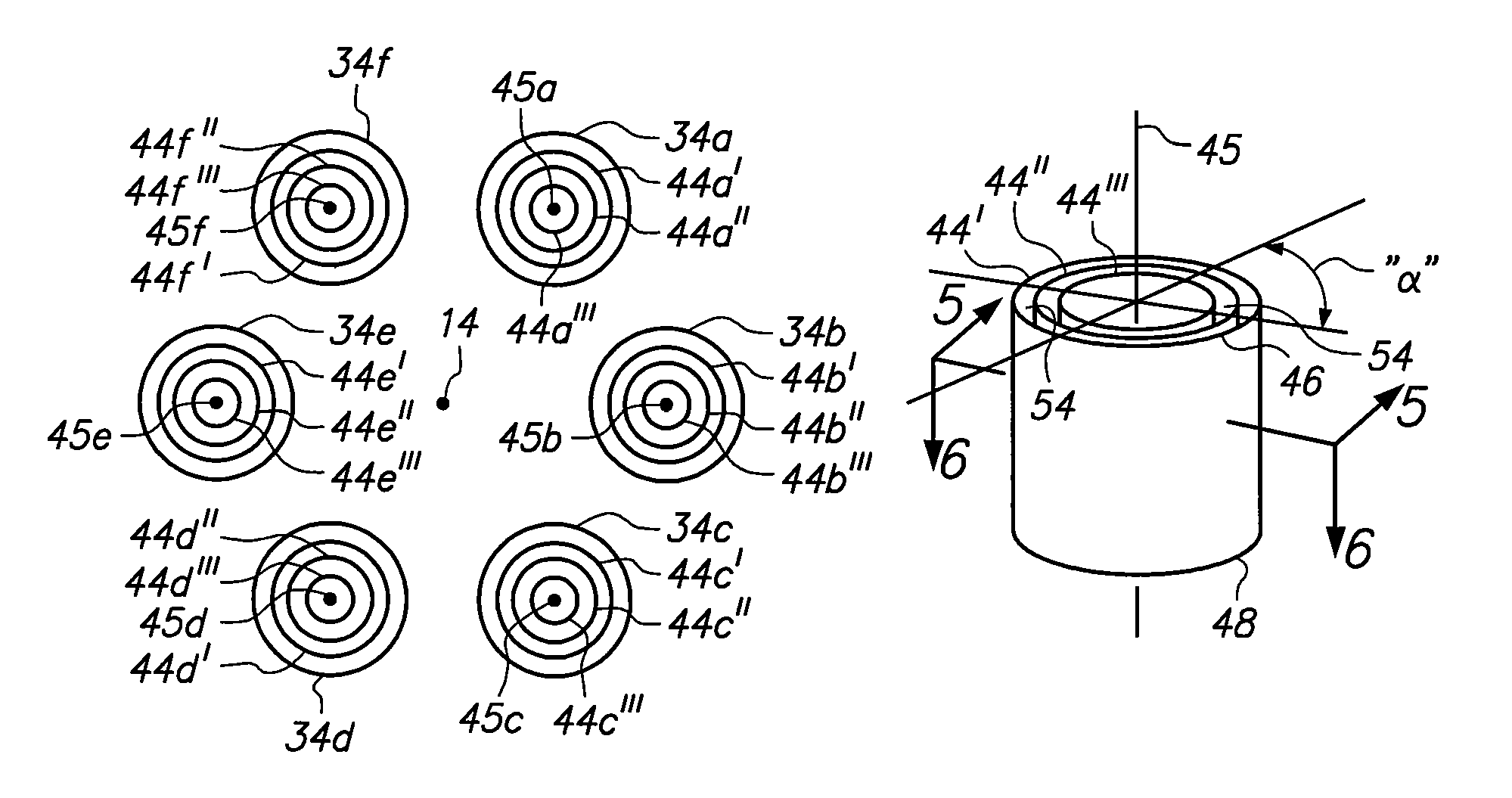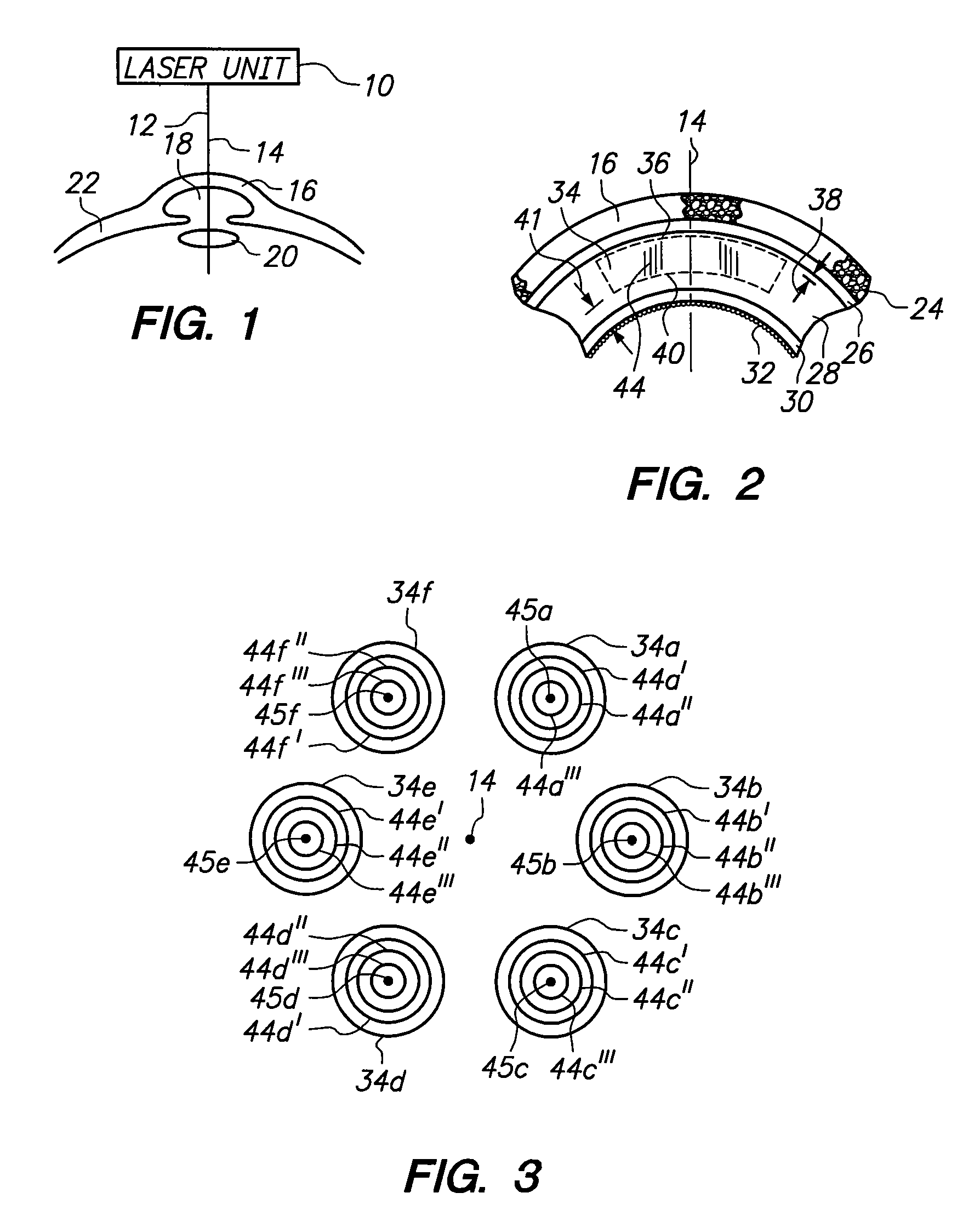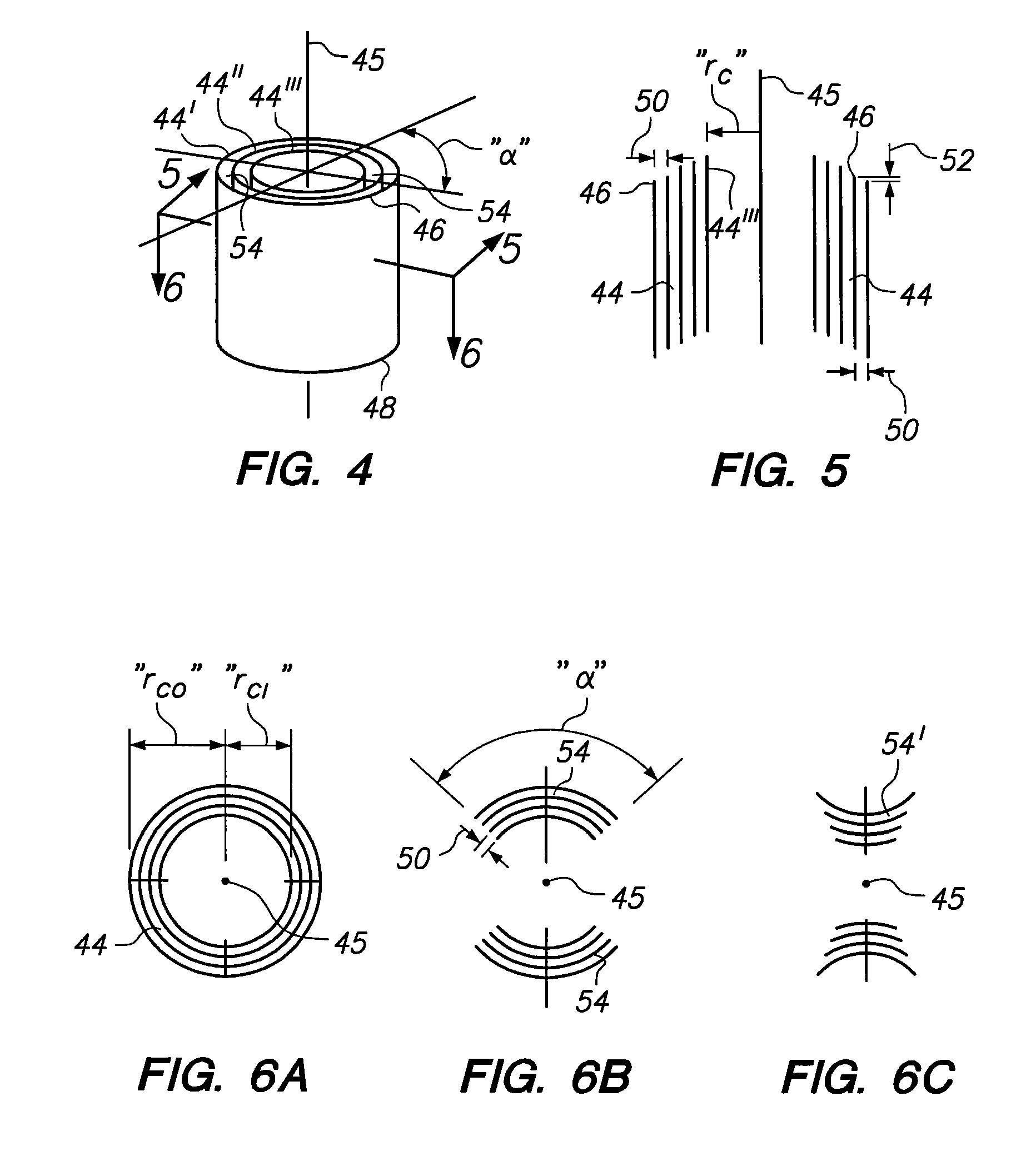System and method for correcting higher order aberrations with changes in intrastromal biomechanical stress distributions
a biomechanical stress and aberration technology, applied in laser surgery, surgery, medical science, etc., can solve the problems of asymmetrical higher order aberrations and not all vision defects, but not all vision defects
- Summary
- Abstract
- Description
- Claims
- Application Information
AI Technical Summary
Benefits of technology
Problems solved by technology
Method used
Image
Examples
Embodiment Construction
[0025]Referring initially to FIG. 1, it will be seen that the present invention includes a laser unit 10 for generating a laser beam 12. More specifically, the laser beam 12 is preferably a pulsed laser beam, and the laser unit 10 generates pulses for the beam 12 that are less than one picosecond in duration (i.e. they are femtosecond pulses). In FIG. 1, the laser beam 12 is shown being directed along the visual axis 14 and onto the cornea 16 of the eye. Also shown in FIG. 1 is the anterior chamber 18 of the eye that is located immediately posterior to the cornea 16. There is also a lens 20 that is located posterior to both the anterior chamber 18 and the sclera 22.
[0026]In FIG. 2, five (5) different anatomical tissues of the cornea 16 are shown. The first of these, the epithelium 24 defines the anterior surface of the cornea 16. Behind the epithelium 24, and ordered in a posterior direction along the visual axis 14, are Bowman's capsule (membrane) 26, the stroma 28, Descemet's memb...
PUM
 Login to View More
Login to View More Abstract
Description
Claims
Application Information
 Login to View More
Login to View More - R&D
- Intellectual Property
- Life Sciences
- Materials
- Tech Scout
- Unparalleled Data Quality
- Higher Quality Content
- 60% Fewer Hallucinations
Browse by: Latest US Patents, China's latest patents, Technical Efficacy Thesaurus, Application Domain, Technology Topic, Popular Technical Reports.
© 2025 PatSnap. All rights reserved.Legal|Privacy policy|Modern Slavery Act Transparency Statement|Sitemap|About US| Contact US: help@patsnap.com



